Flooring in different parts of your house, apart from carrying some aesthetical value, also tend to be appropriate for the function of the space. The flooring of a kitchen needs to be durable and rough, so that it prevents slipping while working, and does not wear out easily if cooking materials fall on it –whether hot or cold. The flooring of a bedroom also needs to be durable to resist wear due to shifting of furniture. That of the living room needs to attractive, polished and preferably smooth.

Flooring of bathrooms takes into account a greater number of functional requirements. Apart from being aesthetically rich and not being slippery bathroom flooring needs to be water resistant, because they are going to be wet for most parts of the day. The wrong type of flooring won’t even stand a few months.
Bewildered? Let us help you make the right choices.
1. Porcelain or Ceramic Tiles as bathroom flooring
So far considered the best option for flooring of bathrooms, Porcelain tiles and Ceramic Tiles have the triple benefit of being water-resistant, elegant and economical.
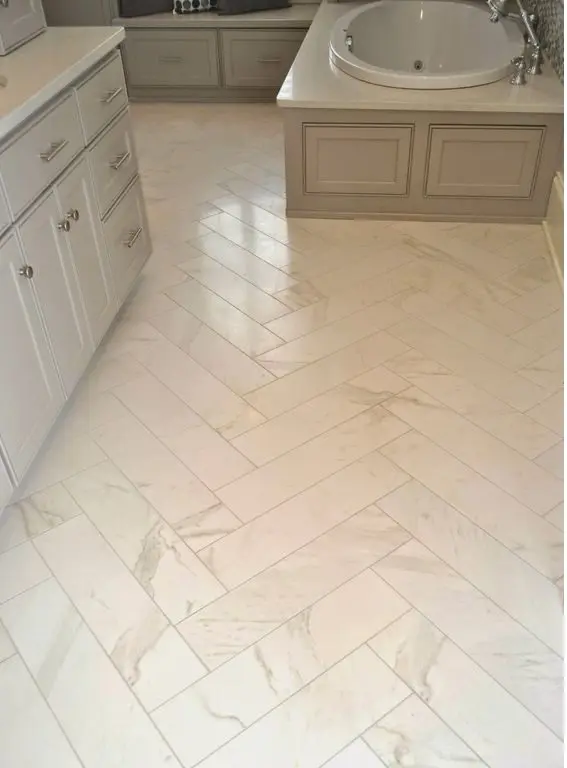
Advantages of Ceramic tiles in Toilets
- When it comes to water resistance, porcelain tiles absorb a smaller amount of water (about 0.5% or less) in comparison to ceramic ones.
- Talking about aesthetics, they have an unquestionable glossy finish and look great.
- They come in desirable patterns and colours can be handpicked to go with the design theme of the bathroom.
- They can be made to realize textured looks too.
- They are moderately low-priced and are a good choice if you wish to get the most out of your money.
- They come in a multitude of appearances and textures, and some varieties provide an exact stone or wooden finish.
- These tiles are available in a wide variety of shapes (hexagons, octagons and so on)
- The variations in sizes are a catch
- They are easy to clean and maintain.
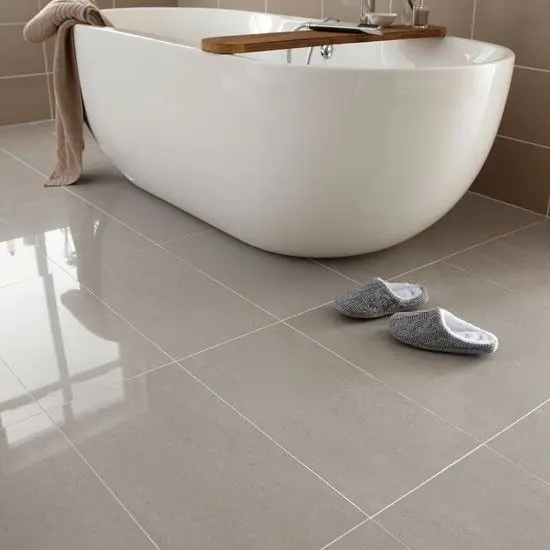
Disadvantages of Ceramic tiles in Toilets
- Tiles are cold, just like stones; not a very pleasant feel in bathrooms
- Tiles tend to be too smooth if not textured. Hence they may cause you to skid in case the floor is wet.
2. Vinyl Sheet Flooring
Sheet Vinyl flooring is one of the most common choices for bathroom flooring amidst users and buyers. They are the safest option for utility rooms like laundry, too, where there is greater exposure to water. It is made of plastic, like that of PVC.
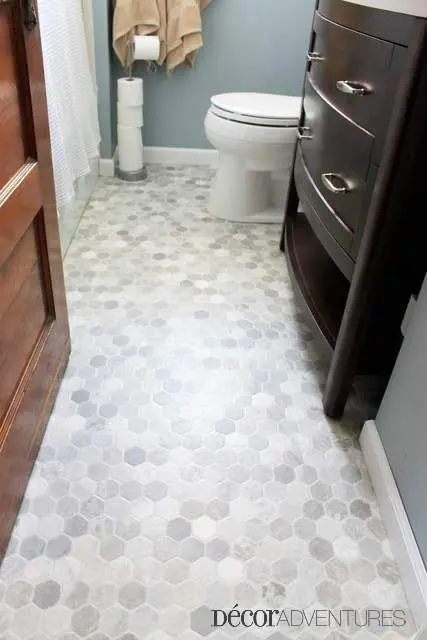
Advantages of Vinyl flooring in Bathrooms
- They are very to install, and are almost a DIY alternative for residents.
- They score well in terms of aesthetics, and are available in a wide range of styles, colours and patterns.
- They take only about 2-3 days to get mounted and set for use.
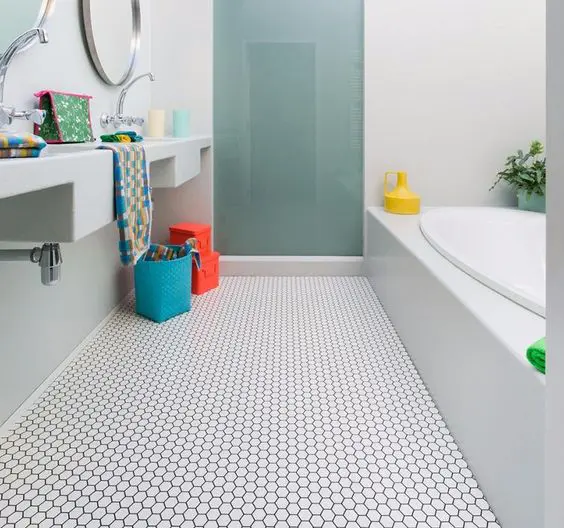
Disadvantages of Vinyl Flooring in Bathrooms
- They are not very cost-effective
3. Natural Stone flooring or Granite Flooring
Stones such as marble, granite, limestone and son are in common use in bathroom flooring nowadays. They are available in different slab sizes and thicknesses. They are, however, more suited to floors of living spaces, bedrooms and even kitchen rather than bathrooms. Read on to find out why?
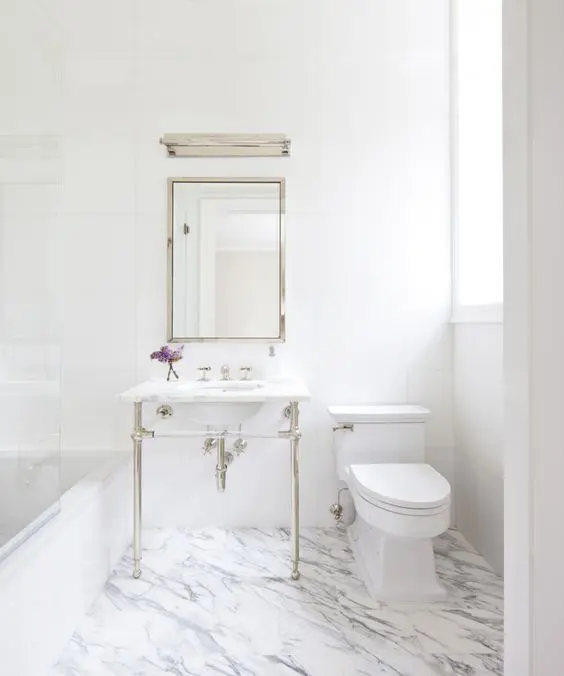
Advantages of Granite flooring in bathrooms
- Available in a wide variety of colours, patterns and textures
- Give a very sleek look to the interiors of the bathroom
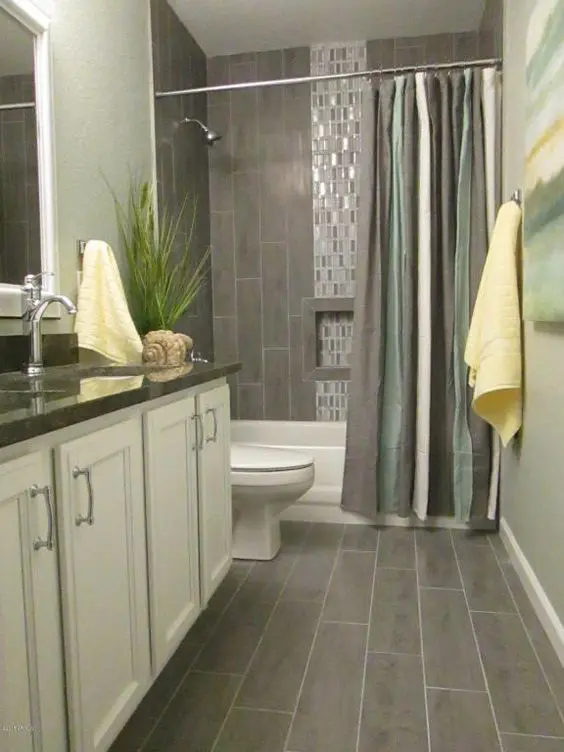
Disadvantages of Granite flooring in Bathrooms
- By far, the most expensive alternative for bathroom flooring
- A few damping issues, though not too much
- Cold and slippery
4. Laminate Flooring
A better flooring choice than hardwood, laminate flooring requires damp prevention of its wooden foundation. It actually comprises resin-infused sheet over a wooden chip bottom. The surface of the laminate could be an imitation of hardwood, natural stones or slate. The topmost wear layer is exceedingly sturdy and may remain undamaged for several years. The planks have tight seams between them for better waterproofing.
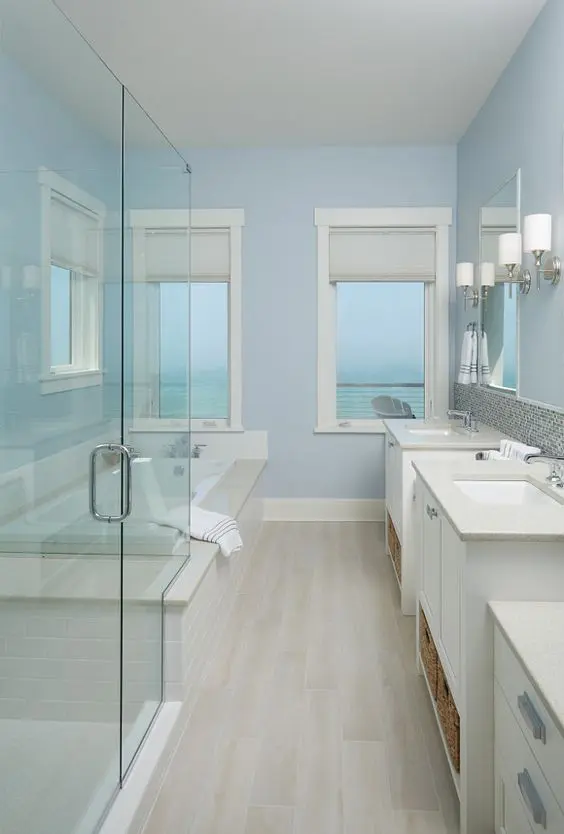
Advantages of Laminate Flooring in Toilets
- Easy to clean
- Water resistance is high
- Can be given any colour or texture or imitated look

Disadvantages of Laminate Flooring in toilets
- If the wooden chip base happens to entrap any moisture, it might simmer up and swell.
- Yet to be successfully implemented as a fully waterproof surface
– Sakshi Singh





